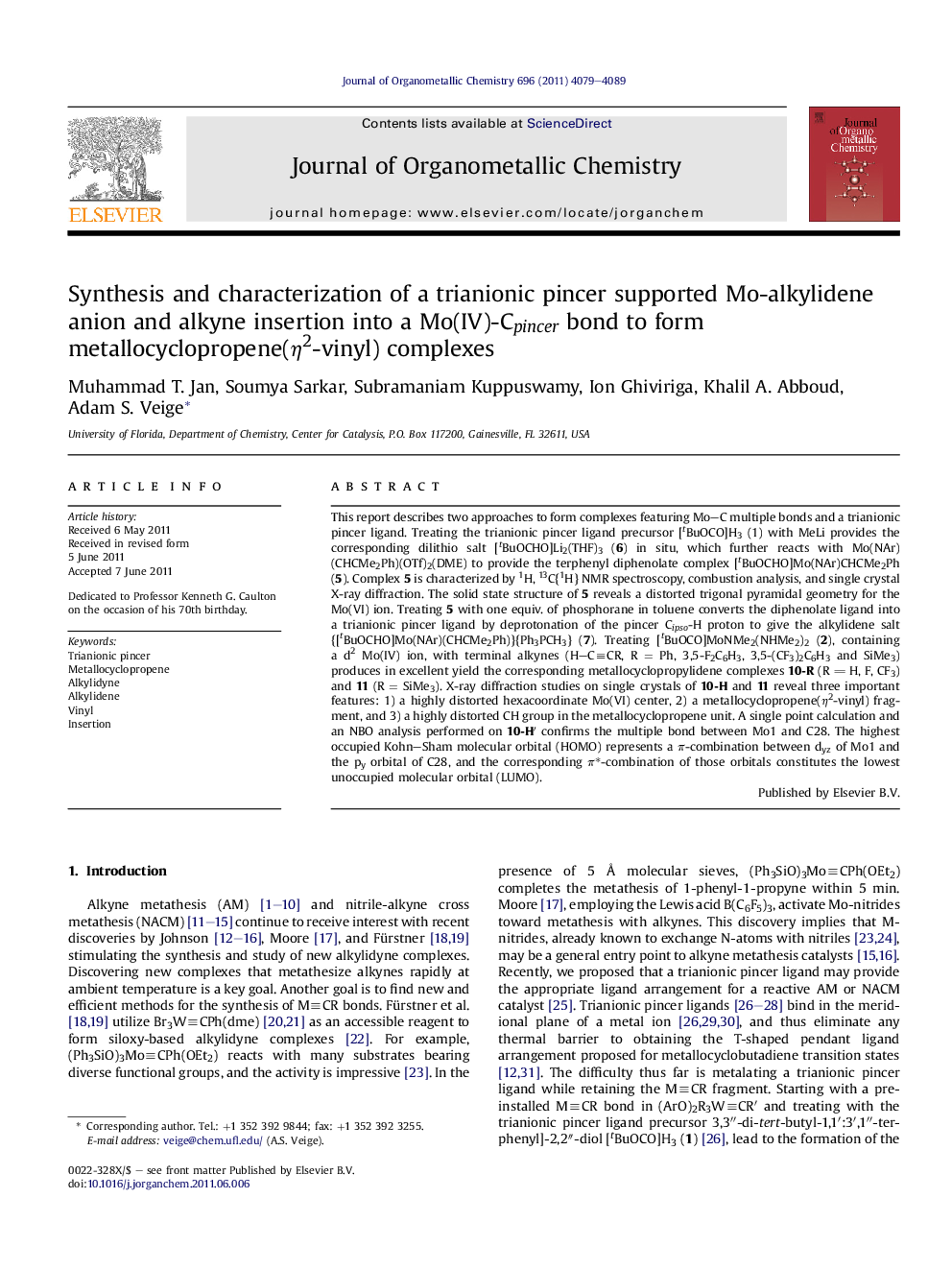| Article ID | Journal | Published Year | Pages | File Type |
|---|---|---|---|---|
| 1323612 | Journal of Organometallic Chemistry | 2011 | 11 Pages |
This report describes two approaches to form complexes featuring Mo–C multiple bonds and a trianionic pincer ligand. Treating the trianionic pincer ligand precursor [tBuOCO]H3 (1) with MeLi provides the corresponding dilithio salt [tBuOCHO]Li2(THF)3 (6) in situ, which further reacts with Mo(NAr) (CHCMe2Ph)(OTf)2(DME) to provide the terphenyl diphenolate complex [tBuOCHO]Mo(NAr)CHCMe2Ph (5). Complex 5 is characterized by 1H, 13C{1H} NMR spectroscopy, combustion analysis, and single crystal X-ray diffraction. The solid state structure of 5 reveals a distorted trigonal pyramidal geometry for the Mo(VI) ion. Treating 5 with one equiv. of phosphorane in toluene converts the diphenolate ligand into a trianionic pincer ligand by deprotonation of the pincer Cipso-H proton to give the alkylidene salt {[tBuOCHO]Mo(NAr)(CHCMe2Ph)}{Ph3PCH3} (7). Treating [tBuOCO]MoNMe2(NHMe2)2 (2), containing a d2 Mo(IV) ion, with terminal alkynes (H–C≡CR, R = Ph, 3,5-F2C6H3, 3,5-(CF3)2C6H3 and SiMe3) produces in excellent yield the corresponding metallocyclopropylidene complexes 10-R (R H, F, CF3) and 11 (R = SiMe3). X-ray diffraction studies on single crystals of 10-H and 11 reveal three important features: 1) a highly distorted hexacoordinate Mo(VI) center, 2) a metallocyclopropene(η2-vinyl) fragment, and 3) a highly distorted CH group in the metallocyclopropene unit. A single point calculation and an NBO analysis performed on 10-H′ confirms the multiple bond between Mo1 and C28. The highest occupied Kohn–Sham molecular orbital (HOMO) represents a π-combination between dyz of Mo1 and the py orbital of C28, and the corresponding π∗-combination of those orbitals constitutes the lowest unoccupied molecular orbital (LUMO).
Graphical abstractTreating terphenyl diphenolate metal complexes with phosphorane, PPh3PCH2, provides a convenient method for accessing trianionic pincer ligand complexes. Alkynes insert into the Mo–Cpincer bond of trianionic pincer ligands to form metallocyclopropenes. Figure optionsDownload full-size imageDownload as PowerPoint slideHighlights► Synthesis of trianionic pincer supported Mo complexes featuring Mo–C multiple bonds. ► A method for converting a terphenyl diphenolate into a trianionic pincer ligand. ► Alkyne insertion into a Mo–C(pincer) bond to form metallocyclopropenes. ► Solid state structural and DFT analyses of a metallocyclopropene.
